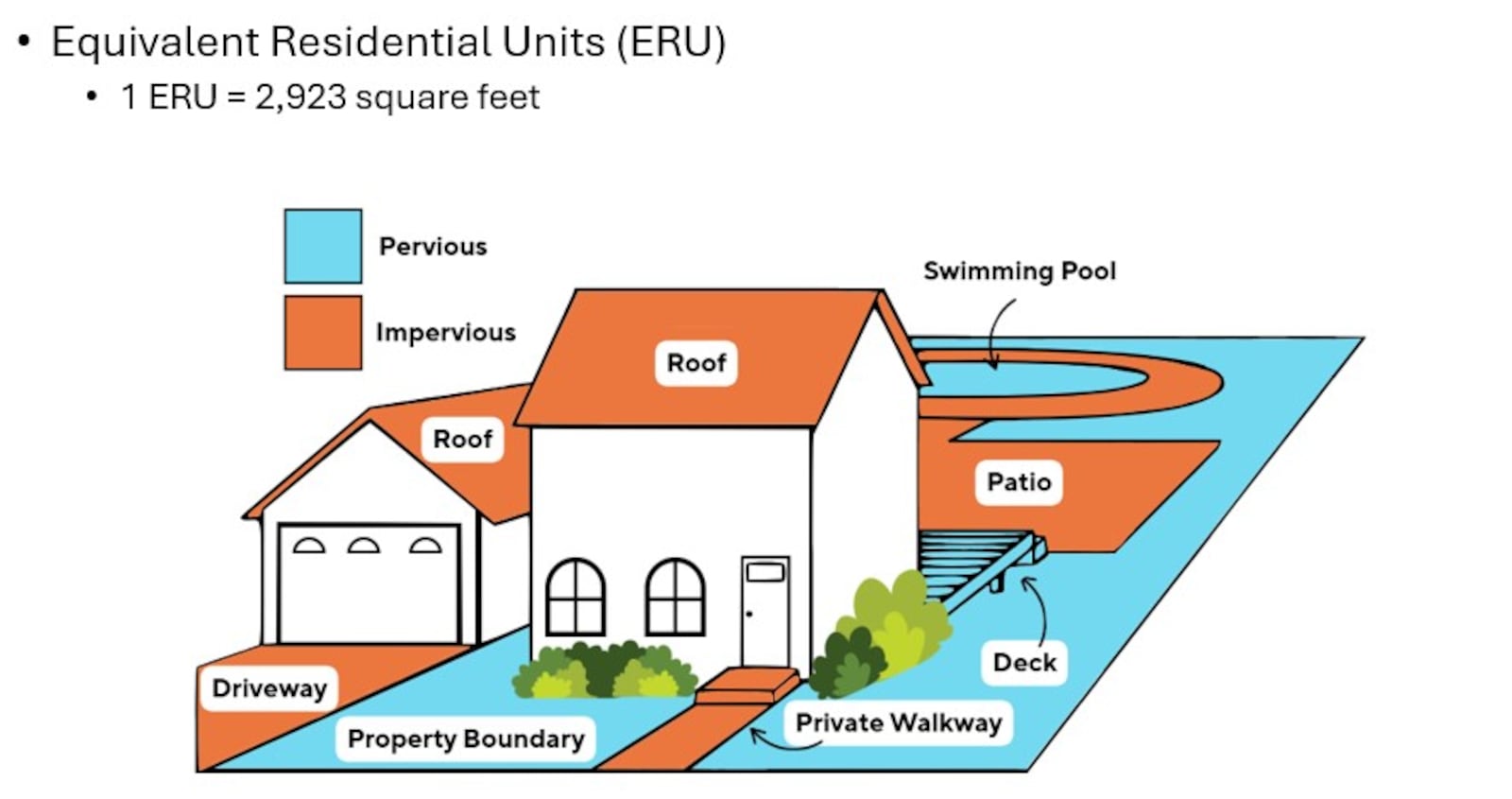The “system is anywhere from 75 to 100 years old in some parts, and is as new as 20 years old in other parts, so bringing that all under one system does not come easily,” Riverside Mayor Peter Williams said at a City Council meeting earlier this month. “This is a decision that had been put off in the past for years. ... I want folks to know that this is not something we dreamed up yesterday.”
But some residents and property owners say they are very unhappy about the new fees, which they say are substantially higher than other communities.
“The amount of the fee is atrocious,” said Tim Gosnell, who lives on Beatrice Drive. “We have senior citizens who can’t afford it, you have churches (and businesses) that can’t afford it.”
Riverside City Council in 2022 approved establishing a stormwater utility fee to pay for activities that seek to address rainwater accumulation and prevent flooding.
Residents and property owners will be charged fees quarterly, and the first bills are going to be issued in April, said Beth Moore, Riverside’s public service director.
Moore said stormwater fees will be based on the amount of “impervious” surface on properties, which includes hard surface like rooftops, parking lots, driveways, patios and concrete walkways that limit or prevent stormwater from going into the ground.
Riverside will calculate fees for properties using a measurement called the Equivalent Residential Unit (ERU). ERU is the average hard surface area of a single-family residential parcel, and one ERU in Riverside is 2,923 square feet of impervious area.
There are three tiers of quarterly fees for residential properties ranging from $21 to $54, depending on the amount of hard surface. Non-residential properties will pay $36 per ERU.
Moore said this means a store with 8,000 square feet of impervious area would have to pay the cost of 2.73 ERUs.
Residents will get the chance to reduce their bills by up to 25% if they install stormwater control measures like rain gardens, rain barrels and vegetative filter strips, Moore said.
A stormwater masterplan released in 2015 identified 13 problem flood areas across the city and recommended various solutions for each, which included expanding or installing new stormwater collection systems, improving ditch systems and regular cleanings.
The study determined there were $20 million in capital improvements needed to address areas with flooding issues, said Mayor Williams. The mayor said the city has about 64 miles of storm sewer pipe and more than 1,200 catch basins and 1,200 manholes.
The stormwater utility program is expected to generate about $1.4 million next year, and hopefully about $2 million each year after that, said Riverside City Manager Josh Rauch.
James Kinney, a representative for the Overlook Mutual Homes on Colin Kelley Drive, said the program does not appear to provide any benefit to Overlook’s residents because the living community does not tie into the stormwater system. He has asked the city to ask the homes be exempted from the fees.
Steve Gaby, a resident who was elected to the City Council earlier this month, said some people in the city are struggling to pay their bills and can barely afford medicine and groceries. He said the new fees will be extremely burdensome.
“This is the biggest money grab in Riverside history,” Gaby said at a City Council meeting on Nov. 3, one day before the election.
About the Author




